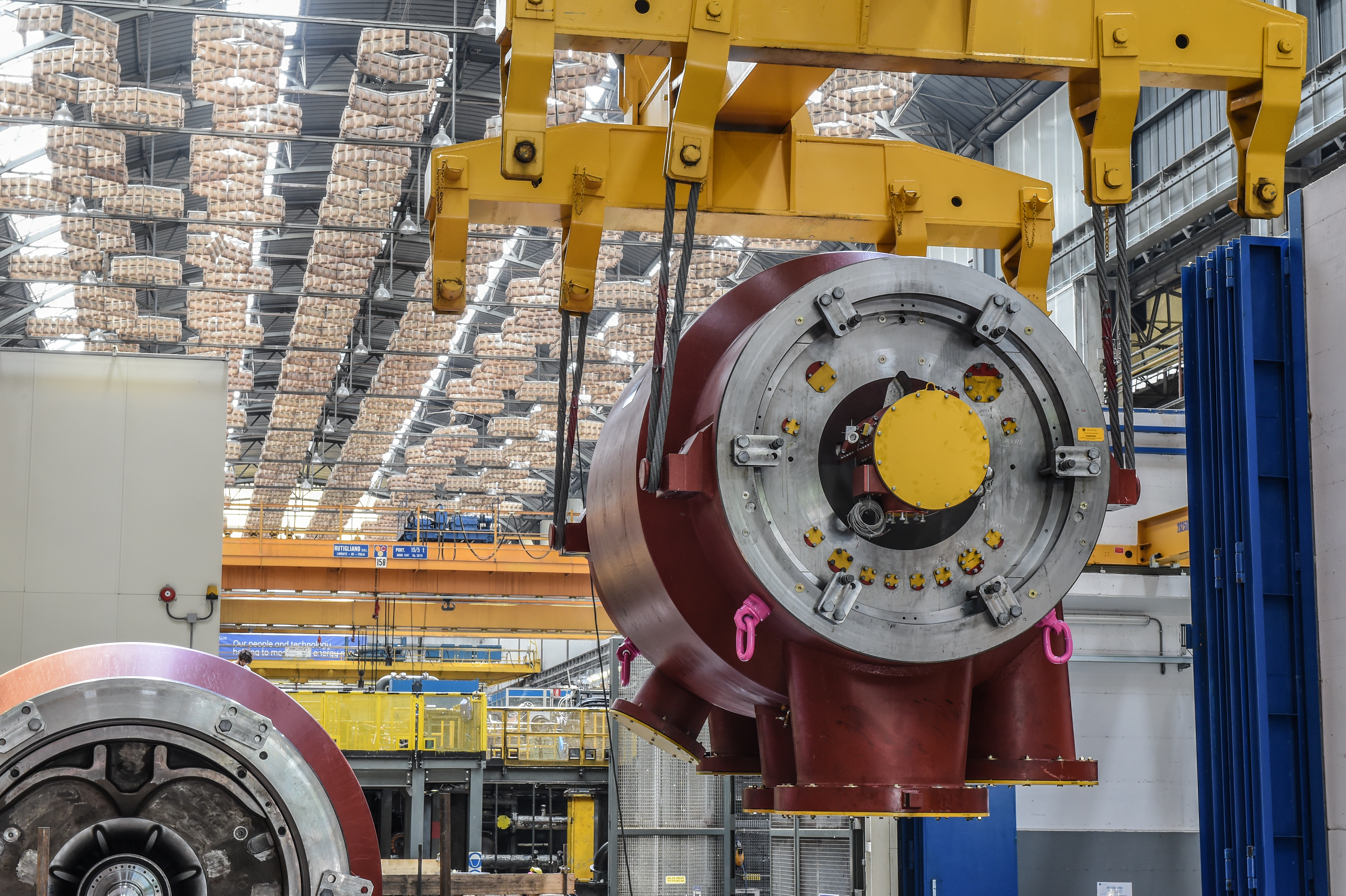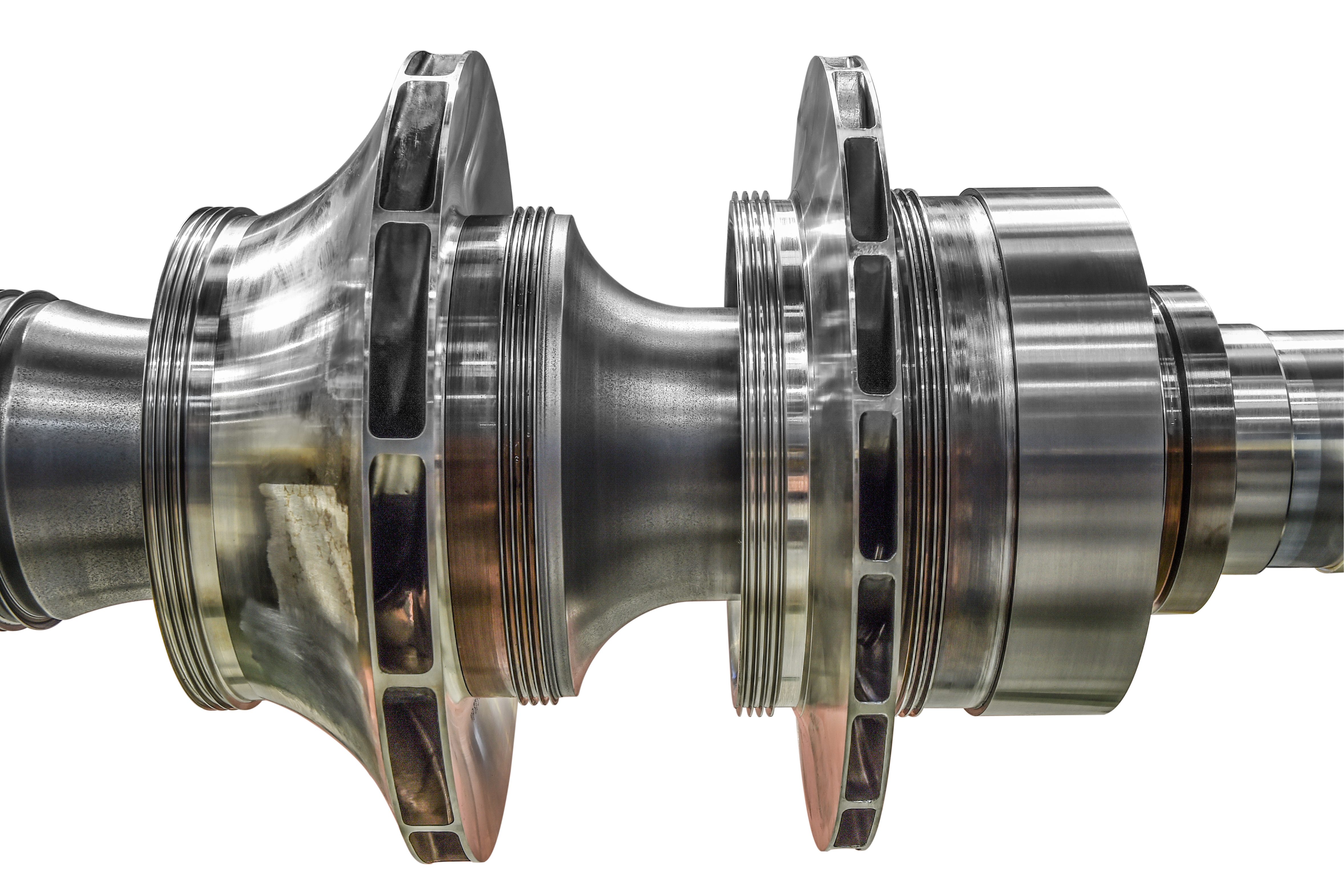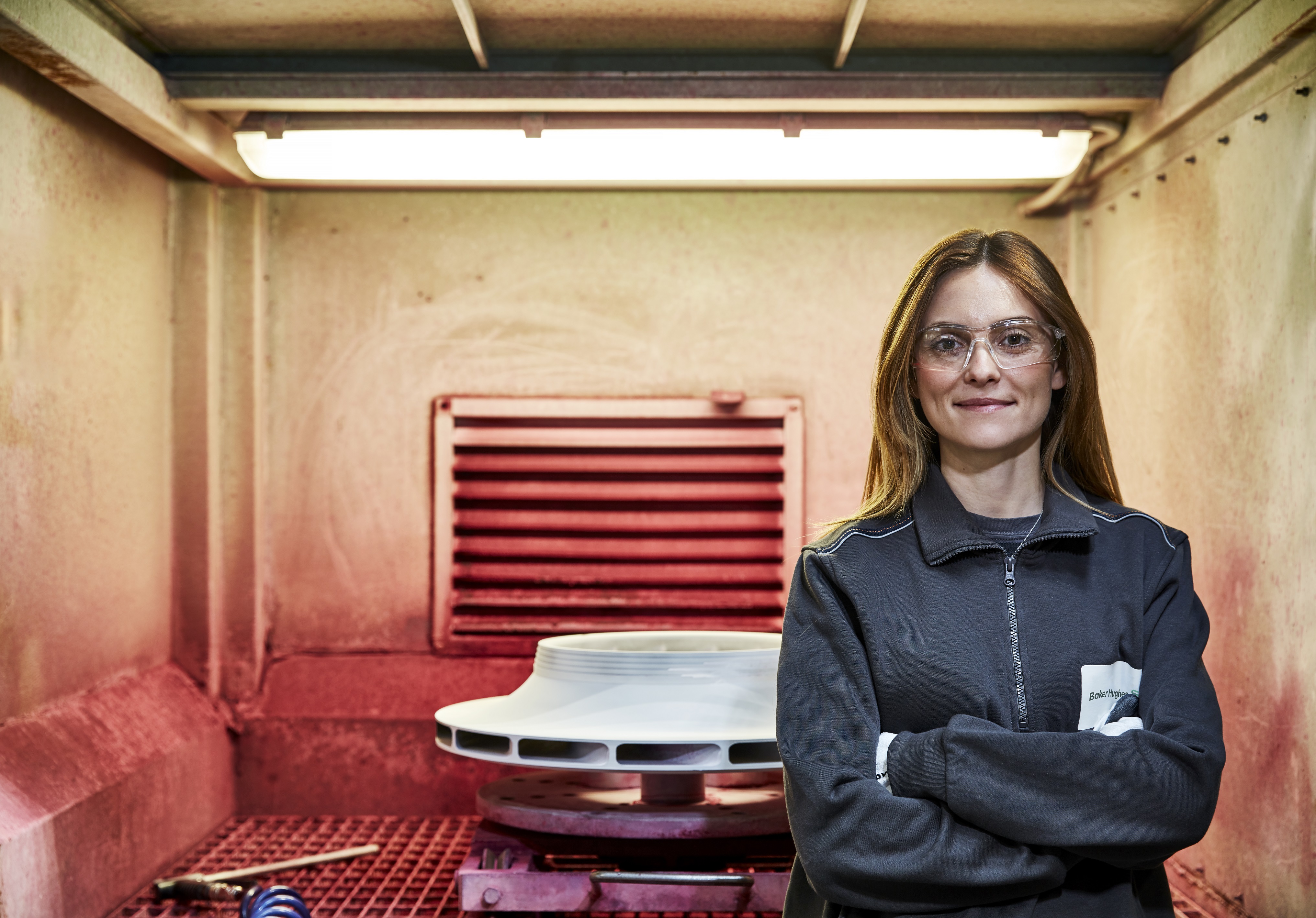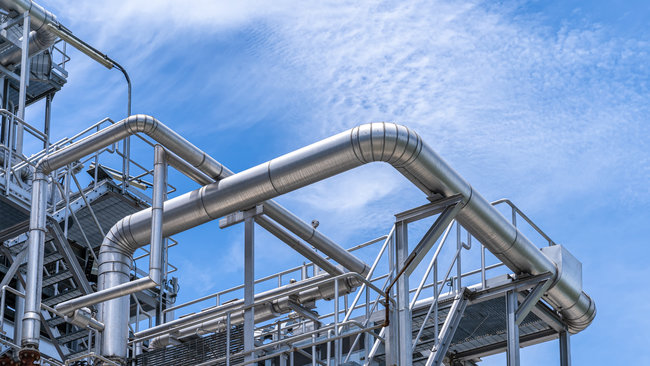Compressors are a key link in the energy value chain. They also have a role to play in the energy transition by helping to reduce emissions. But first… what is a compressor anyway?
Compressors are large mechanical devices that use either rotational force or piston movement to increase the pressure acting on a gas and decrease its volume as a result. They play an important role across the entire energy value chain—increasing the efficiency of various processes and ultimately helping to reduce emissions.

1. Compressors move energy.
Gas fields are rarely located close to where the energy is needed, so the gas needs to be transported by pipeline or ship. Pipelines, like those from Russia to western Europe or from Canada to the United States, are typically thousands of miles long. Compression stations are built every 70 miles or so, to overcome natural pressure loss and 'push' the gas to the next station along the line. When pipelines aren't practical, such as between Australia and Japan, natural gas is compressed by a factor of 10 or more to cool and liquefy it for transport in specialized ships. Once the liquefied natural gas (LNG) arrives at its destination, it is regasified and transported by pipeline to cities, industrial clusters, and other big users of energy.
2. Compressors will enable the hydrogen revolution.
Compression technologies will be key to unlocking hydrogen's full energy potential. Compressors handle and pressurize gas – and hydrogen is no different. Hydrogen is typically produced at relatively low pressures (20–30 bar or lower) and must be compressed prior to transport. This is why compressors play a critical role in both hydrogen compression and transport. Most compressors used today for gaseous hydrogen compression are either positive displacement compressors (reciprocating) or centrifugal compressors.
A reciprocating compressor uses a driver to move a piston back and forth. This motion compresses the hydrogen by reducing the volume it occupies. Reciprocating compressors are the most commonly used compressor for applications that require a very high compression ratio.
A hydrogen centrifugal compressor must operate at impeller tip speeds faster than that of a natural gas compressor to achieve the same compression ratio with a reduced number of compressors because of the low molecular weight of hydrogen. A centrifugal compressor is the compressor of choice for pipeline transport applications due to its high throughput and moderate compression ratio.
It is important to note that compressors currently represent upwards of 30% of the investment needed for a refueling station. Safe, efficient, and reliable compression technologies can help guarantee high hydrogen quality at the required pressure.

3. Compressors make CCUS projects possible.
Compression of CO2 is necessary to take carbon emissions from some of the hardest to abate industries – oil and gas, mining, cement, metals – and transport it for eventual storage. Compression technology today can handle CO2 and is designed to withstand its highly corrosive properties.
CCUS (carbon capture, utilization, and storage) systems and processes differ with plant size and type of application. Usually, storage pressure will require a nominal 1,600 psia, while the current pipeline specification is 2,215 psia. One key to minimizing the variable operation and maintenance costs of a CCUS system is to integrate the most efficient and reliable compression technology with the capture process. The challenge of implementing CCUS on the scale likely to be required in the future will be to reduce the installed cost and minimize the operating cost penalties inherent to the processes.
For example, with almost the same compression capacity, Baker Hughes has reached +5% efficiency for its compressor technology in recent years and reduced the physical footprint of its compressor trains by up to 15%.
4. It takes the highest engineering capabilities to develop the world’s compressors.
Compressors are highly complex and highly engineered technologies that are designed to manage a range of gas conditions. But early compression technology has its roots in the Renaissance. Leonardo da Vinci was the first to imagine the use of centrifugal force to increase water pressure. The very first centrifugal compressor was manufactured in the 17th century. It was installed in a pump to move liquids along a pipe. Its impeller increased water pressure for agricultural applications, and a similar technology was also used in the ventilation of mines.
Over the years, the materials have changed, and the very complex design profile of the impellers has evolved, moving from open to closed elements and from 2D to 3D blades. Today the shape of each blade can help increase the efficiency and the pressure of the compressor, and major advances in aerodynamics and roto-dynamics continue to drive enhanced design improvements.
Compressor components are individually tailored for customer needs and applications. For example, an OEM like Baker Hughes will design each compressor with a mix of custom and standardised components for a specific plant and for a specific gas composition, flow, and pressure. Having delivered over 10,000 centrifugal, axial, and reciprocating units worldwide, Baker Hughes works with operators to design the most efficient solution for their needs to minimize capital and operating expenses.

5. Compressor technology can leave less of a footprint.
When a typical compressor is running, there is unavoidable gas leakage between its moving and static parts, which is particularly difficult to prevent at very high pressures. Some of that leakage is internally recirculated (lowering efficiency and increasing absorbed power), and some is released into the atmosphere, often as a flare. You can learn more about flaring here.
Another advanced solution is when the compressor and electric motor are completely sealed inside the same casing to eliminate any leakage. The rotor is levitated by magnetic bearings, so no oil is needed.
This is quite an amazing feat of technology, considering a rotor can weigh several tons. The Integrated Compressor Line (ICL) technology from Baker Hughes uses this innovative design. Over 50 ICL units are used by operators worldwide, particularly in Europe, where zero emissions and minimized maintenance are paramount in applications such as remote pipeline compression stations and gas storage applications.
Energy Forward Stories
Sign up to stay up to date on the latest innovations and people shaping the future of our industry.




